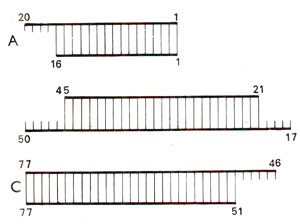
Fig. 41.10. Condensation between two nucleotides with protected 5' OH and 3' OH groups in the sugars and protected amino groups in the nitrogenous bases (Ac = acetyl, An = anisoyl and Bz = benzoyl protective groups).

Fig. 41.11. Three duplex fragments, with single stranded sticky ends, produced for the synthesis of yeast alanyl tRNA gene by H.G. Khorana.
The first tRNA whose structure could be known was yeast alanyl tRNA. In 1965
R.W. Holley (who died in 1993) and his coworkers gave a detailed structure of yeast alanyl tRNA (77bp). This information was immediately used by
H.G. Khorana and his coworkers to deduce the structure of the gene for yeast alanyl tRNA. The structure of this gene would obviously be such that one of the two strands of DNA (gene) would be complementary to base sequence of yeast alanyl tRNA. The other strand would then automatically have the same sequence as in tRNA except that in place of uracil of tRNA there would be thymine in DNA. Synthesis of such a long chain (77 base pairs) of double stranded DNA was rather difficult in 1965 (not now after more than 25 years), but Khorana and his coworkers had extensive experience of synthesizing DNA of known base sequences. It was decided that such a long chain could nbt be synthesized by adding a single base each time. Therefore, it was decided that small segments of deoxyribonucleotides ranging in length from 5 to 20 nucleotides should first be synthesized. These segments would be single stranded and would cover the whole length of both the strands of DNA. These would then be joined to form double stranded DNA, 77 nucleotide pairs long. In actual synthesis of yeast alanyl gene, the following steps were involved.
Synthesis of oligonucleotid.es. Fifteen oligonucleotides ranging from pentanucleotide (5 bases) to an icosanucleotide (20 bases) were synthesized. Synthesis was conducted through condensation between hydroxyl group at the 3' position of one nucleotide and phosphate group at 5' position of the second nucleotide. In order to bring about condensation, all other functional groups, nottaking part in condensation were protected using specific protective groups. After protecting the groups, reaction between a nucleotide with protected 5' end and another nucleotide with protected 3' end proceeds according to Figure 41.10. Subsequently condensation was also brought about between di-, tri- or tetranucleotides.
Synthesis of three duplex fragments. With the help of 15 oligonucleotides (single stranded), three duplex fragments, each with a single stranded end, were prepared (Fig. 41.11). These three fragments consisted of (i) the first 20 nucleotides, with the nucleotides 17-20 as single stranded; this fragment was called 'A'; (ii) the nucleotide residues 17-50 with single stranded regions 17-20 and 46-50; this segment was called 'B'; and (iii) the nucleotides 46-77 with single stranded region 46-50; this segment was called 'C'.

Fig. 41.10. Condensation between two nucleotides with protected 5' OH and 3' OH groups in the sugars and protected amino groups in the nitrogenous bases (Ac = acetyl, An = anisoyl and Bz = benzoyl protective groups).

Fig. 41.11. Three duplex fragments, with single stranded sticky ends, produced for the synthesis of yeast alanyl tRNA gene by H.G. Khorana.
Synthesis of gene from three duplex fragments. The three fragments 'A', 'B' and 'C were joined to give complete gene in each of the two following ways; (i) In one scheme, 'A' was joined to 'B' taking advantage of the overlap in residues 17-20; 'C' was then added, with the overlap in the region 46-50 residues. The complete double stranded DNA with 77 base pairs representing the gene was thus ready, (ii) In the other scheme, 'B' was first added to 'C and to this 'A' was added in the end to obtain the complete gene. This gene, which was synthesized in 1970, was hopefully used for subsequent work, since this gene could replicate and make its own copies.








